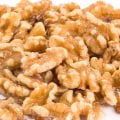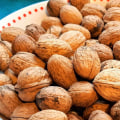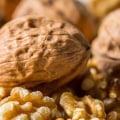The harvesting time for walnuts starts from late September to early October. Harvest black walnuts as soon as the outer shell softens but is still green. The best quality walnut meat is light in color and milder in flavor. If you can leave a finger depression in the shell, the nut is ripe.
Most people wait until the nuts begin to fall before However, ripe nuts can be shaken off tree branches or come off with a long stick. So what kind of nuts do we eat? Well, black walnut was in fact part of many Native American diets, but most of the nuts we eat today are actually English walnuts, which have a milder flavor and wider appeal. They also have thinner and easier to break shells. Black walnuts, on the other hand, have a stronger, more earthy flavor.
Their shells are thick, difficult to break, and are likely to stain your hands. A walnut is the edible seed of a drupe of any tree of the genus Juglans (family Juglandaceae), particularly the Persian or English nut, Juglans regia. The reason behind the extreme popularity of an English nut over a black walnut is its flavor and utility as a source of prepared food. While English walnuts are the most commonly consumed, their density and nutrient profile are generally similar to those of black walnuts.
Black walnuts are mainly used for a variety of purposes, such as baking, cooking, and for chopping nuts. However, such refrigeration technologies are not available in developing countries where walnuts are produced in large quantities; there, walnuts are best stored below 25 °C (77 °F) with low humidity. A black walnut has a thick, hard shell of green color, unlike the shell of an English walnut, which is delicate and thin. Although harvesting black walnut trees may seem difficult, picking walnuts directly from plants is child's play.
Many people with walnut trees on their property find fruit a nuisance and may be receptive to you offering to clean their garden and remove the nuts from them. Hold the nut tightly and gently tap the nut with a hammer at a 90 degree angle to the seam until it cracks. Seven phenolic compounds, including ferulic acid, vanillic acid, coumaric acid, syringic acid, myricetin and juglone, were identified in walnut shells. The ideal temperature for long-term storage of walnuts is −3 to 0 °C (27 to 32 °F) with low humidity for industrial and domestic storage.
If you have one that grows in your garden, you may know that growing other plants under and around black walnut trees can be a challenge. Walnut oil is commercially available and is used primarily as a food ingredient, particularly in salad dressings. Walnut trees can be grown with a central leader or removed the leader, which will encourage the growth of side shoots and restrict the size of the tree.


